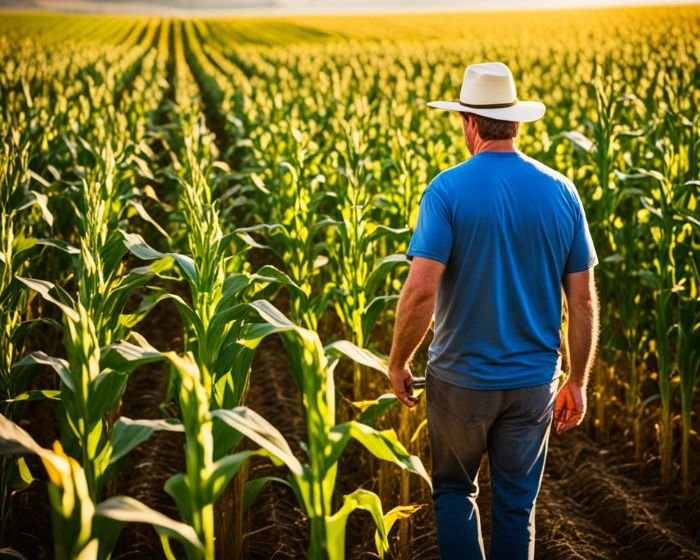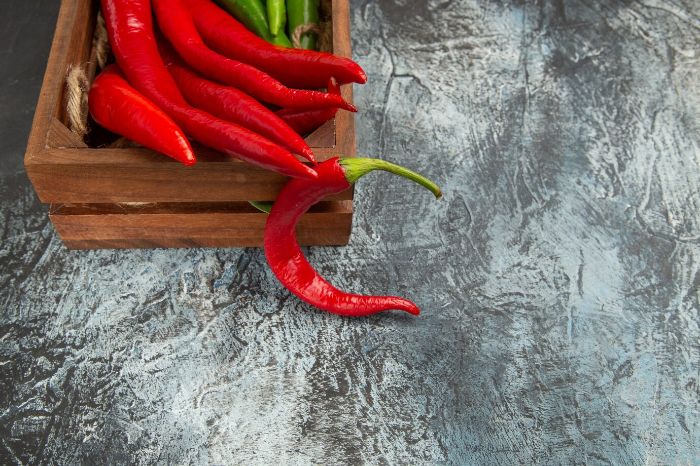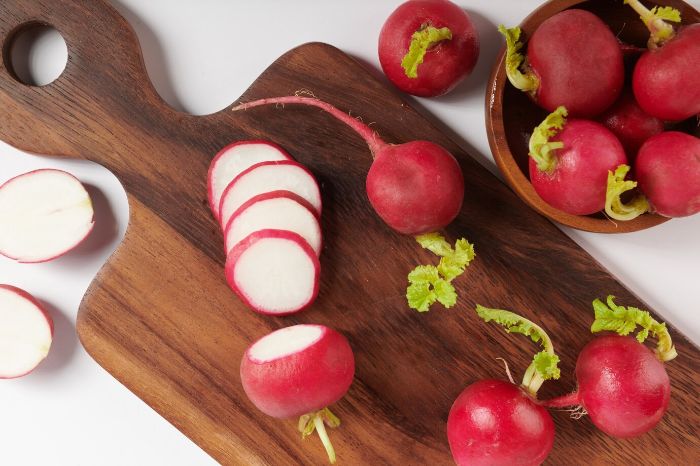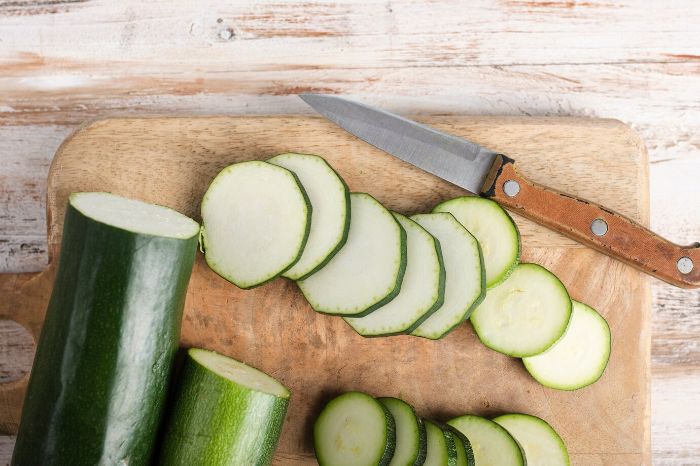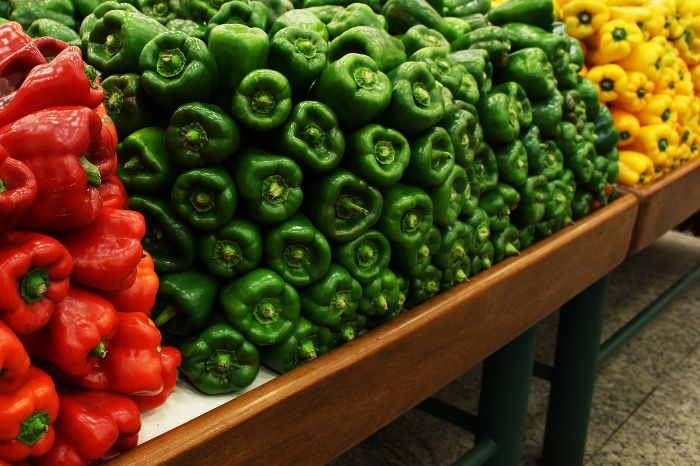Corn was not domesticated for taste, but for function. Originating as teosinte, a wild grass in the Central Balsas Valley, it was reshaped over millennia into a crop that could be stored, transported, and scaled. Its rise is tied not only to human nutrition, but to systems of trade, conquest, and industry.
Tracking corn’s development reveals the interface between agricultural innovation and civilizational growth – from pre-Columbian fields to modern supply chains.
Key Takeaways:
- Corn was first domesticated from teosinte in the Central Balsas Valley over 9,000 years ago through selective breeding by early Mesoamerican farmers.
- Its global spread followed the Columbian Exchange, transforming agriculture across Europe, Africa, and Asia due to its adaptability and caloric density.
- The industrialization of corn introduced hybridization, GMOs, and large-scale monocultures, embedding corn into food processing, biofuels, and global trade.
- Corn holds deep cultural and spiritual significance among indigenous peoples and has become a global culinary staple and national symbol in multiple regions.
- Sustainability concerns tied to soil degradation, biodiversity loss, and overreliance on chemical inputs highlight the urgent need for agroecological reform.
Table of Contents
From Wild Grass to Domesticated Corn
Corn did not exist in the wild. It originated from teosinte, a Central American grass with sparse, rock-hard seeds and a branching form. Thousands of years ago, early agriculturalists in what is now southern Mexico began selecting useful traits – larger kernels, exposed cobs, upright stalks. Through this process, teosinte was transformed into corn, a cultivated grain also known in scientific contexts as maize.
Genetic Shifts That Enabled Cultivation
Although teosinte and corn look unrelated, they share nearly identical genomes. The differences result from targeted changes in a handful of genes. One of the most significant is tb1, which alters plant architecture by suppressing side branching and encouraging vertical growth. Other mutations reduced seed casing thickness and encouraged kernel exposure – crucial changes that made the plant easier to process and store.
These genetic shifts did not occur randomly. They were accumulated over centuries by farmers who selected and replanted seeds with subtle advantages. Corn is not the product of one mutation, but the outcome of a thousand small choices.
Cultivation in the Balsas Valley
Archaeological evidence from the Balsas River region, dated to around 9,000 years ago, shows the earliest stages of corn domestication. Charred cobs and pollen remains found in rock shelters suggest ongoing selection and cultivation. Each season, farmers selected plants for better yield, earlier ripening, and improved edibility, gradually laying the foundation for long-term genetic change.
By 5000 BCE, corn had diverged so far from teosinte that it could no longer survive without human involvement. The plant had crossed the threshold into domestication.
Traits That Made Corn a Staple Crop
To become a reliable food source, corn needed more than yield. Two traits in particular made it scalable: non-shattering ears, which kept the kernels attached to the cob during harvest, and synchronized ripening, which allowed for efficient gathering and storage. These features enabled communities to build surplus and plan food cycles.
As corn spread into different environments, local variants known as landraces emerged. Highland corn developed cold tolerance; lowland strains adapted to heat and humidity. Each landrace reflected not chance, but regional adaptation under human guidance.
Corn became viable not simply because it could grow, but because it could grow predictably under changing conditions.
How Corn Spread Globally After 1492 – Trade, Empire, and Adaptation
The spread of corn beyond the Americas began with the Columbian Exchange. After 1492, corn was introduced to Europe, Africa, and Asia through trade routes established by colonial powers. Its adaptability to diverse climates, combined with high caloric output per acre, made it a strategic crop for expanding empires and subsistence economies alike.

Rapid Adoption Across Continents
Within decades of its arrival, corn was being cultivated in southern Europe, along the Mediterranean, and across the Sahel region of Africa. Farmers valued its drought tolerance, fast growth cycle, and compatibility with existing staple crops. In areas with poor soils or irregular rainfall, corn often replaced or supplemented traditional grains like millet, sorghum, or barley.
In parts of Africa, corn became deeply embedded in local agriculture and cuisine. It was not merely adopted – it became foundational. Dishes such as ugali, sadza, and nsima reflect how corn integrated into food systems that previously relied on indigenous cereals.
Strategic Value for Colonial Economies
Colonial administrations promoted corn for its productivity and utility. On plantations, it fed enslaved labor forces. In trading ports, it became a bulk commodity. Its low input requirements and short growing season made it ideal for both forced and subsistence agriculture.
In Asia, corn spread through Spanish and Portuguese routes, entering India, Southeast Asia, and southern China. It was especially successful in hilly regions where rice cultivation was limited. By the 18th century, corn had become part of mixed farming systems across Eurasia.
Long-Term Agricultural Consequences
Corn’s rapid integration into global agriculture changed land use patterns. In some regions, it enabled population growth and increased food security. In others, it displaced traditional crops and reduced dietary diversity. This legacy of simultaneous abundance and dependency continues to shape food systems worldwide.
The crop’s success lay not only in its biology, but in its portability. Corn adapted quickly to local conditions and became a lasting feature of the landscapes it entered.
Industrial Corn and the Rise of Engineered Agriculture
By the early 20th century, corn was no longer just a staple crop – it was a raw material for industry. Advances in plant breeding and mechanization allowed for large-scale monoculture, while expanding global markets turned corn into a commodity traded not for consumption, but for conversion.
Hybridization and Yield Optimization
The introduction of hybrid corn in the 1930s marked a major shift in cultivation. Unlike open-pollinated varieties, hybrids were developed by crossing inbred lines to produce plants with uniform traits and high yields. This required farmers to purchase new seed each season, but the gains in productivity were substantial.
By mid-century, hybrid corn had become standard across the American Midwest. Its rapid adoption was driven by two factors: government support for agricultural intensification and the crop’s compatibility with emerging chemical inputs such as synthetic fertilizers and herbicides.
Corn as Industrial Input
Modern corn is rarely grown for direct human consumption. Most of it is processed into secondary products: animal feed, high-fructose corn syrup, ethanol, plastics, and industrial starches. This transformation shifted the purpose of corn from nourishment to utility.
In the United States, roughly 40% of corn goes to livestock feed and another 30% to ethanol production. Only a small fraction is consumed as food. The plant’s structure, especially its high starch content, made it ideal for large-scale conversion and integration into manufacturing pipelines.
Genetic Engineering and Patent Control
In the 1990s, genetically modified (GM) corn was introduced to improve pest resistance and herbicide tolerance. Traits such as Bt expression (for insect resistance) and glyphosate tolerance (for compatibility with herbicide-based weed control) became standard in commercial varieties. This led to higher yields and simplified weed management, but also raised concerns over ecological impact and market concentration.
Biotech companies began patenting GM corn varieties, giving them legal control over reproduction and resale. Farmers who once saved seeds were now bound by licensing agreements. As a result, the corn seed market became highly consolidated, limiting biodiversity and increasing dependency on proprietary genetics.
Agricultural Consequences
The industrialization of corn enabled record production levels but introduced structural risks. Monoculture fields are vulnerable to pests, climate extremes, and soil degradation. Intensive input systems, based on synthetic fertilizers and herbicides, reduced long-term resilience.
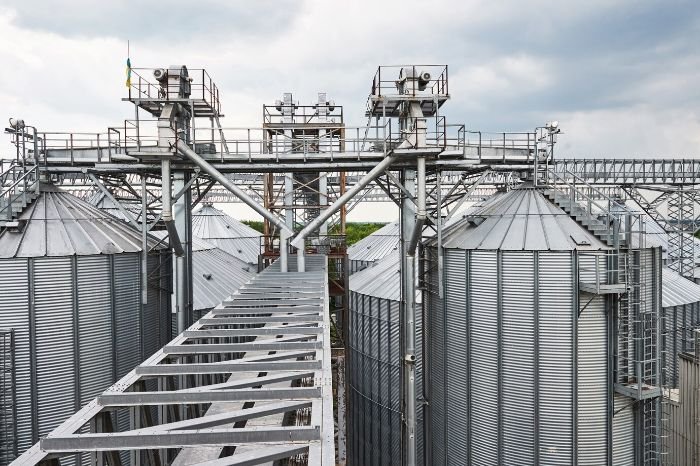
Corn became hyper-efficient in yield but costly in ecological terms. Its success relied on energy, infrastructure, and centralized control.
Corn was no longer a crop. It became a system.
Cultural Role and Symbolic Presence of Corn
Beyond agriculture, corn became a central figure in the symbolic systems of entire civilizations. In Mesoamerica, it was not merely food – it was identity. In modern societies, it evolved into an icon of rural life, national abundance, and industrial power.
Sacred Crop in Indigenous Cosmologies
For the Maya, Aztec, and other pre-Columbian cultures, corn was inseparable from cosmology. Myths described humans as being created from cornmeal. Rituals and seasonal festivals aligned with planting and harvest cycles. Corn was seen not as a product, but as a life-bearing force embedded in time, order, and survival.
This symbolic framework was not abstract. It informed decisions about land use, social roles, and intergenerational knowledge. Ceremonial varieties were cultivated alongside staple landraces, maintaining genetic and cultural continuity.
Corn as National Icon
In the United States, corn came to represent agricultural self-sufficiency and rural identity. The visual of endless cornfields became shorthand for American abundance – featured in literature, political speeches, and marketing campaigns.
This symbolic role expanded during the 20th century, when corn-based industry positioned the crop as a backbone of national productivity. From ethanol to corn-fed meat, the plant became visible not just in the field, but across infrastructure.
Global Culinary Integration
Corn embedded itself in the foodways of multiple regions, often replacing or complementing older staples. In East Africa, it became the base of daily porridge. In South America, it shaped both street food and ceremonial dishes. In the Balkans and Eastern Europe, polenta and cornmeal breads became traditional fare.
Its versatility in forms such as ground, boiled, roasted, or fermented made corn adaptable to diverse culinary contexts and traditions.
Corn occupies multiple roles – subsistence crop, industrial input, national symbol, and ancestral offering. Its cultural trajectory reflects not only where it was grown, but how it was understood.
Sustainability Challenges and the Future of Corn
Corn is efficient, scalable, and embedded in global systems – but it is also ecologically intensive. The same traits that made it suitable for mass production now expose it to environmental risk and structural dependency.
Monoculture and Environmental Pressure
Modern corn production relies heavily on monoculture systems. Growing genetically uniform crops across large areas increases vulnerability to pests, diseases, and climate shocks. These risks are often mitigated through chemical inputs, which create secondary problems: soil degradation, water contamination, and biodiversity loss.
Intensive farming strips the land of organic matter and depletes microbial health. As soil function declines, more inputs are required to sustain the same yields, locking producers into a feedback loop of dependency.
The Limits of Genetic Engineering
Genetically modified corn varieties have addressed specific threats, such as insect damage and weed competition, but they have not solved broader ecological instability. Pest resistance often fades within a few growing seasons. Weeds develop tolerance to herbicides. New traits require new interventions.
Meanwhile, genetic uniformity reduces resilience. The global dominance of a few patented hybrids limits adaptive capacity and increases systemic exposure to future disruptions.
Pathways to Resilience
Solutions exist, but require structural change. Crop rotation, intercropping, and soil restoration techniques can reduce input needs and improve long-term viability. Breeding programs focused on resilience, rather than just yield, offer a path toward stability.
Conservation of traditional landraces is equally critical. These genetically diverse varieties carry traits for drought tolerance, pest resistance, and adaptation to marginal environments. Supporting seed sovereignty and decentralized innovation strengthens both food security and ecological balance.
Corn will remain a global staple, but its future depends on whether it continues as an extractive system or transitions toward ecological alignment.
Conclusion – Corn as System, Resource, and Responsibility
Corn is more than a crop. It is a product of domestication, a tool of empires, a vehicle of industry, and a mirror of ecological tension. Its rise has tracked the trajectory of civilizations – from subsistence to surplus, from field to factory.
Today, its role is both foundational and contested. The challenge is not how to remove corn from global agriculture, but how to redesign its systems of use. Sustainability will not come through yield alone. It will depend on diversity, resilience, and a shift from short-term extraction to long-term alignment with land and climate.
Frequently Asked Questions About Corn
What is the origin of corn?
Corn originated from a wild grass called teosinte, domesticated in southern Mexico around 9,000 years ago. Through selective breeding, early farmers transformed it into a productive food crop.
How did corn spread outside the Americas?
Corn spread globally after the Columbian Exchange in the 16th century. It was quickly adopted in Europe, Africa, and Asia due to its adaptability, high caloric value, and short growing cycle.
Why is most modern corn not grown for direct consumption?
The majority of industrial corn is used for animal feed, ethanol, and processed ingredients such as corn syrup and starches. Only a small portion is consumed directly as food.
What are the environmental challenges of corn production?
Large-scale monoculture of corn leads to soil degradation, loss of biodiversity, and dependency on synthetic fertilizers and pesticides. These systems reduce long-term ecological resilience.
Can corn be grown more sustainably?
Yes. Sustainable practices include crop rotation, conservation of landraces, reduced chemical inputs, and breeding for traits like drought resistance and pest tolerance. These approaches improve system-level resilience.
How has genetic engineering affected corn farming?
Genetic engineering introduced traits like pest resistance and herbicide tolerance. These changes improved short-term yields but also increased dependence on patented seeds and reduced genetic diversity.
Why is corn considered culturally significant in indigenous societies?
In Mesoamerican cultures, corn was central to mythology, seasonal rituals, and identity. It was seen not only as food, but as a life-giving element tied to the origin of humanity.
How adaptable is corn to different environments?
Corn is highly adaptable due to selective breeding and genetic variation. It can grow in high altitudes, dry regions, and tropical zones, which enabled its global spread after initial domestication.






